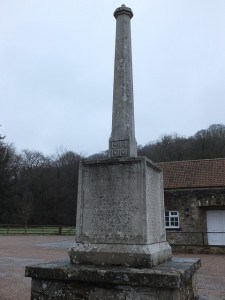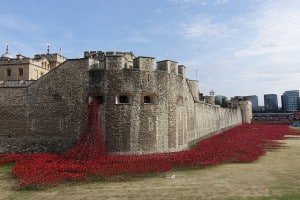“The lamps are going out all over Europe. They will not be lit again in our lifetime.”
Sir Edmund Grey, the British foreign secretary gave haunting voice to his, and many others’, foreboding about the War to End All Wars in early August of 1914. August 4 marked the centenary of Britain’s declaration of war against the German Empire, following Germany’s invasion of Belgium. By one measure this was the beginning of human history’s most destructive war to that point, a war that shattered Europe’s old political order forever and left tens of millions dead or debilitated through the ravages of war and disease In the United States, if the Great War is remembered at all, it is as “World War One,” a somewhat nasty and confusing prelude to World War Two, which receives the lion’s share of attention in American film and popular historical writing. This popular oversight has persisted despite the fact that in only a single year of combat in the Great War, the United States suffered approximately 116,000 deaths, compared to approximately 405,000 killed in both theatres of World War II. For reasons good and bad, the price in blood paid by American soldiers in the unglamorous mud of Europe’s Western Front is often swept away by the memory of America’s “Greatest Generation,” enshrined in innumerable films, miniseries, and popular histories. Not so in Europe. While a Second World War would later offer its own horrors, the grim realities of the First World War have not been forgotten by Europeans, and for good reason. In only a few short years of fighting, European belligerents lost the greater part of a generation of young men in an indecisive conflict. The muddy moonscape of the Western Front was watered with the blood of the cream of a European generation, who died by the hundreds and thousands on a front that only moved a few short miles between late 1914 and 1918. Far from being forgotten, the shattering of European civilization has been remembered in a century-long search for meaning in an apparently futile war. It’s difficult to go far in France or England without stumbling across a memorial to the fallen. Western European and colonial film and television have long sought to capture the grim realities of life on the Western Front (Masterpiece Theatre’s Downton Abbey, to give only one recent example).
One of Britain’s stunning tributes to the fallen is only the most recent of the attempts to remember and cope with the loss. To mark the centenary of the beginning of the war, 888,246 ceramic poppies were placed at the Tower of London to mark the deaths of British and colonial troops who died in the conflict, a simple memorial executed to stunning effect. Poppies appear to flow out of the historical landmark like blood, watering the moat around the Tower as a sign of the blood poured out by so many. Perhaps inadvertently, the depiction of the flowing blood suggests an important truth of the war forgotten so often in the Americas: the true cost of the Great War’s legacy hasn’t yet been measured. In fact, the legacy of World War One is as alive and dramatic as it has ever been. For example, as a diplomatic maneuver, in 1917 the British government issued the Balfour Declaration, favoring the establishment of a Jewish national state in Palestine, a major step toward the establishment of the state of Israel and its complicated reality today. The Treaty of Versailles that ended the war in the west regarded nebulous ideas of national identity and “self-determination” as the foundational hallmarks of states. Separatists in Ukraine have asserted Russian national identity as a major motivation in their bloody struggle against the Ukrainian government, only the latest conflict motivated by the impossibly elusive boundaries of “national identity.” In Flanders fields, poppies may blow, and a breathtaking display at a historic landmark may mark the dead of early last century. I wonder what poppies will mark the Gaza strip; Israel’s cities; the remains of AIDS researchers and international travellers from Malasian Airlines Flight 17, shot down by Ukrainian separatists; or the combatants of eastern Ukraine — all, in one way or another, victims of a struggle begun a century ago.

